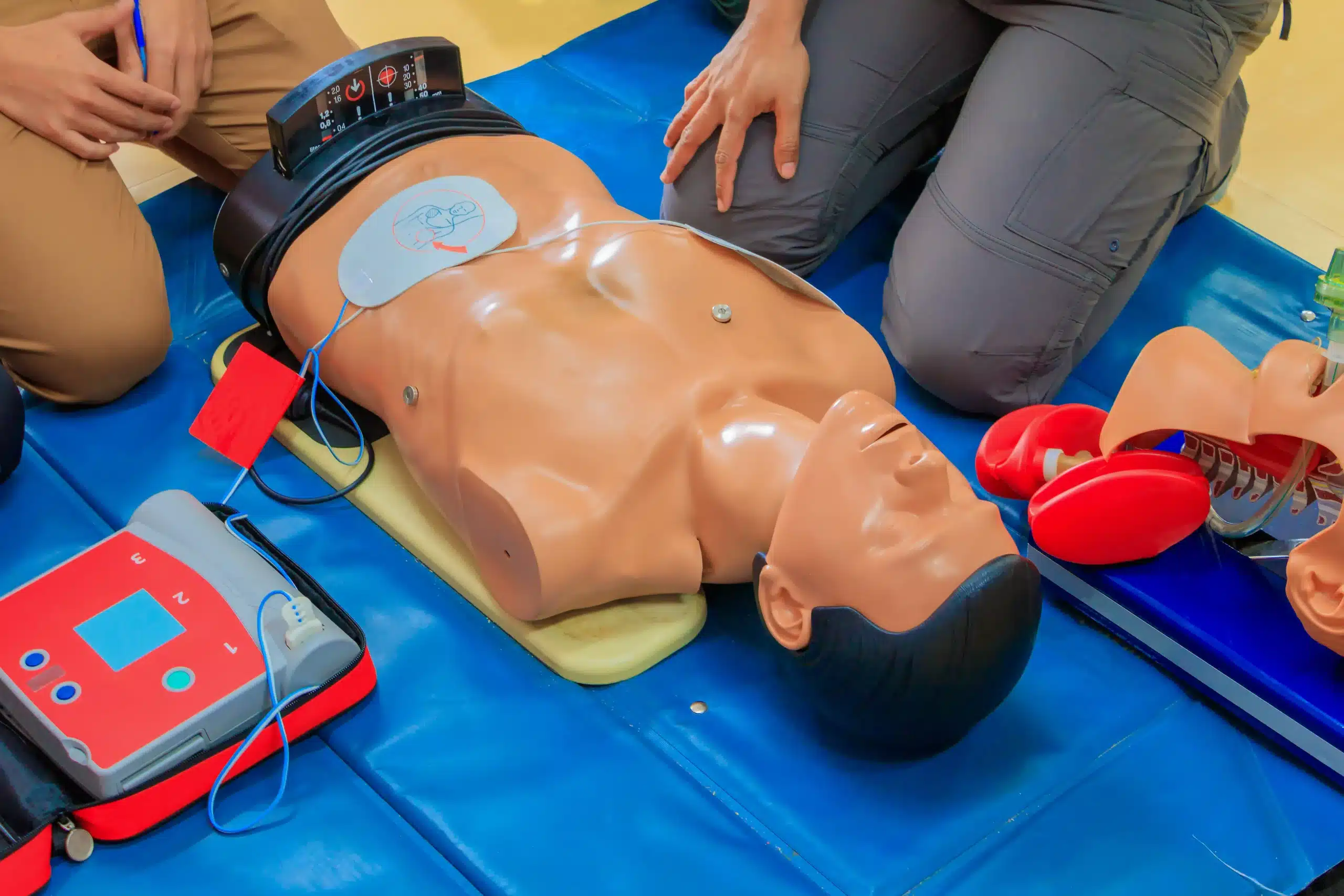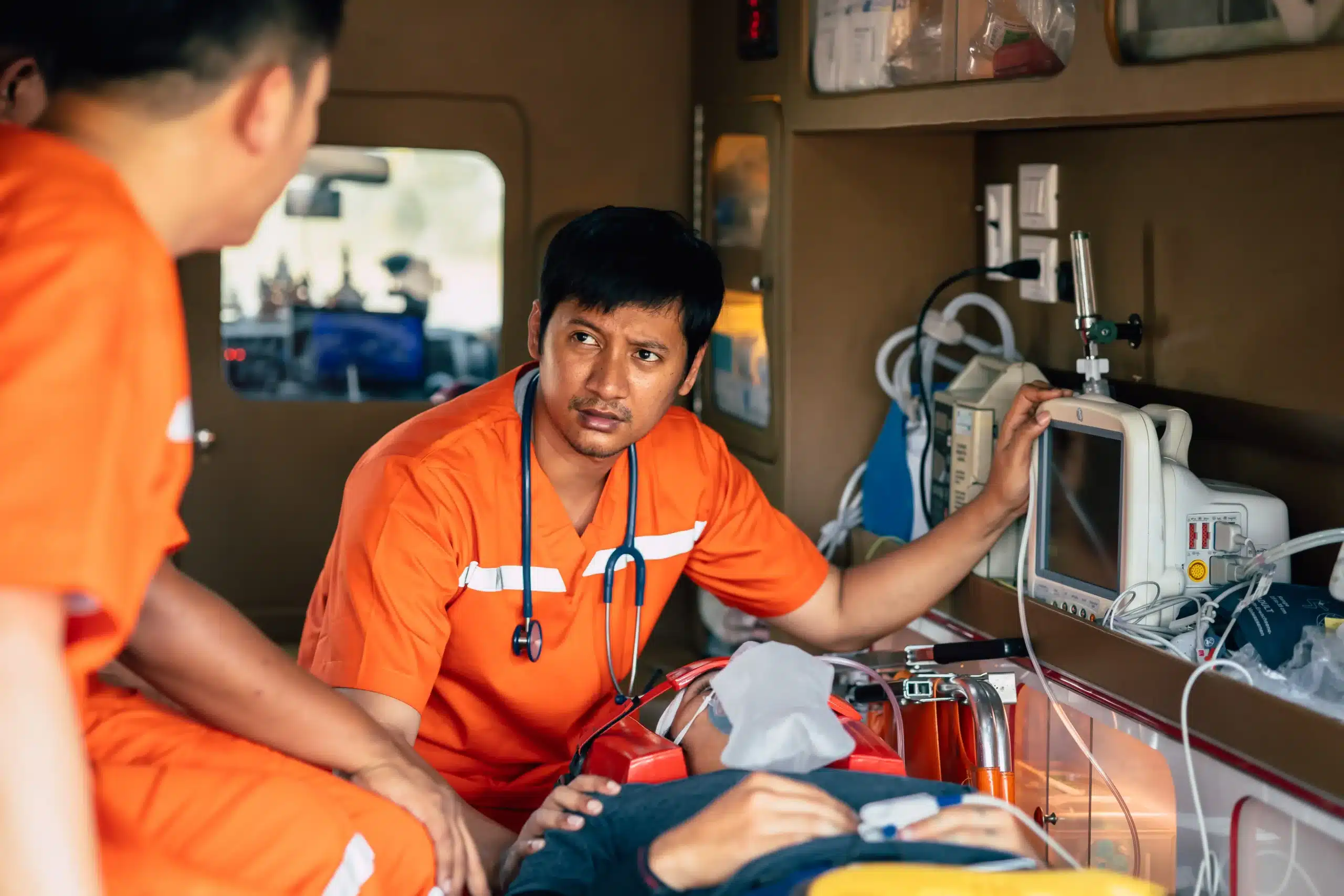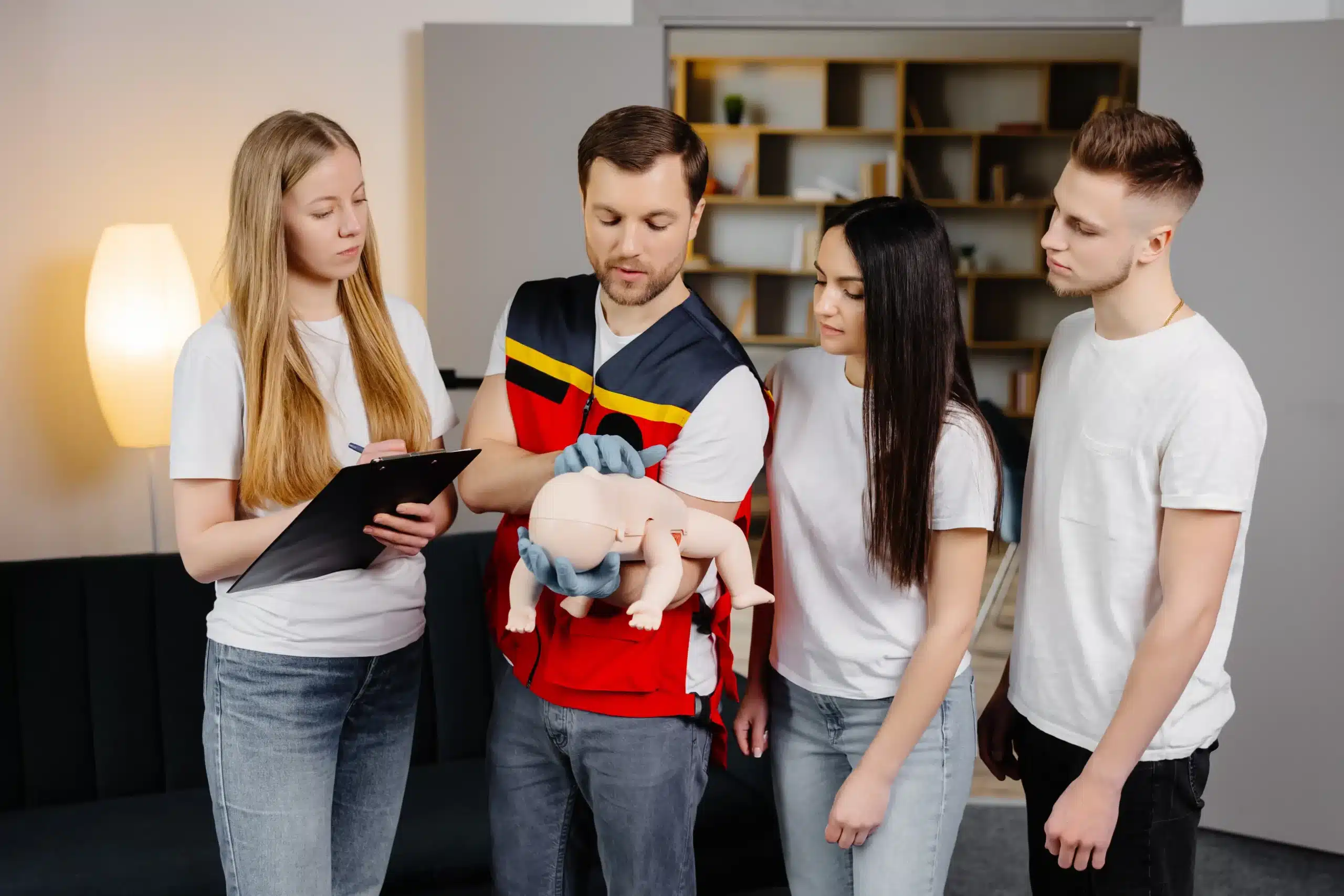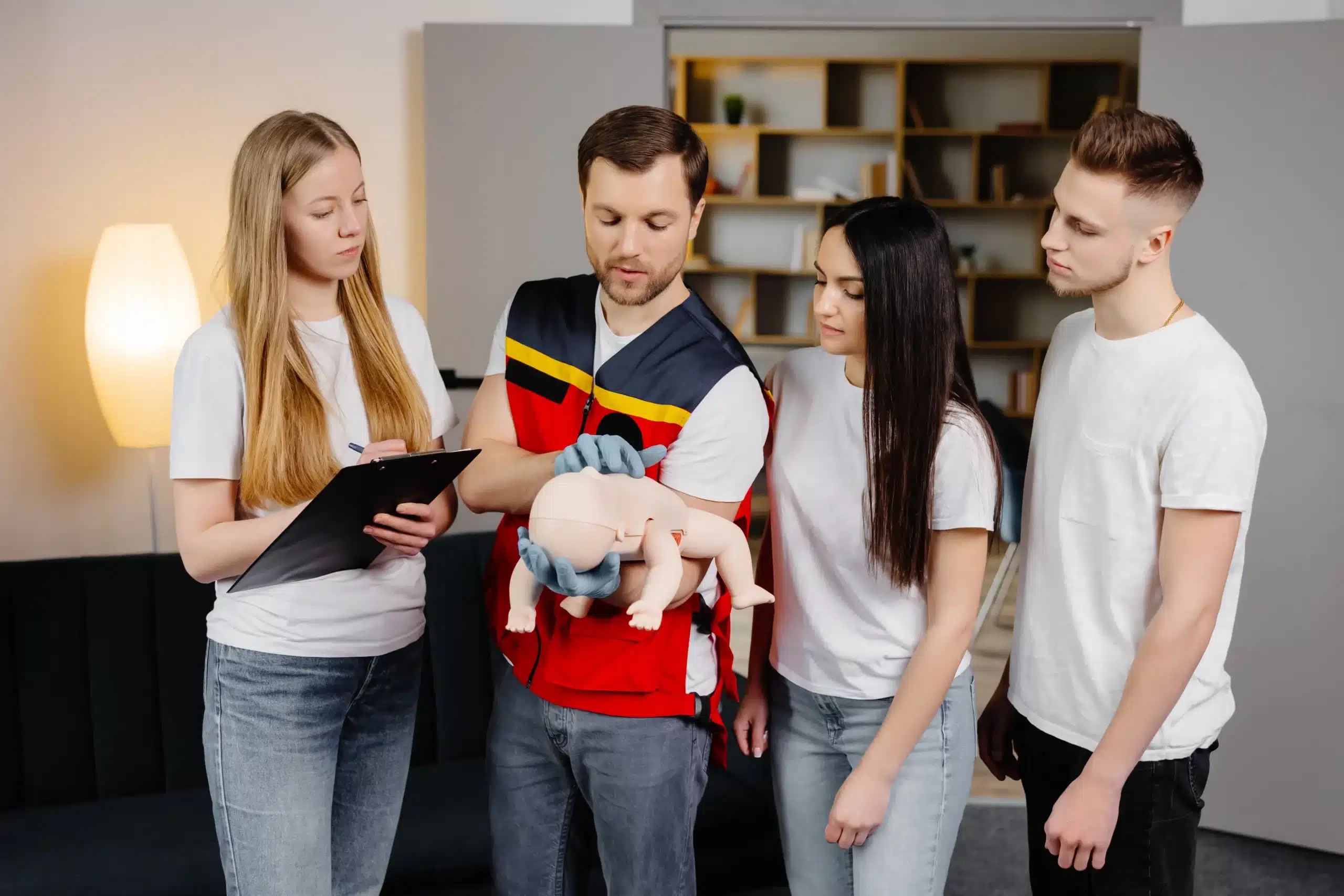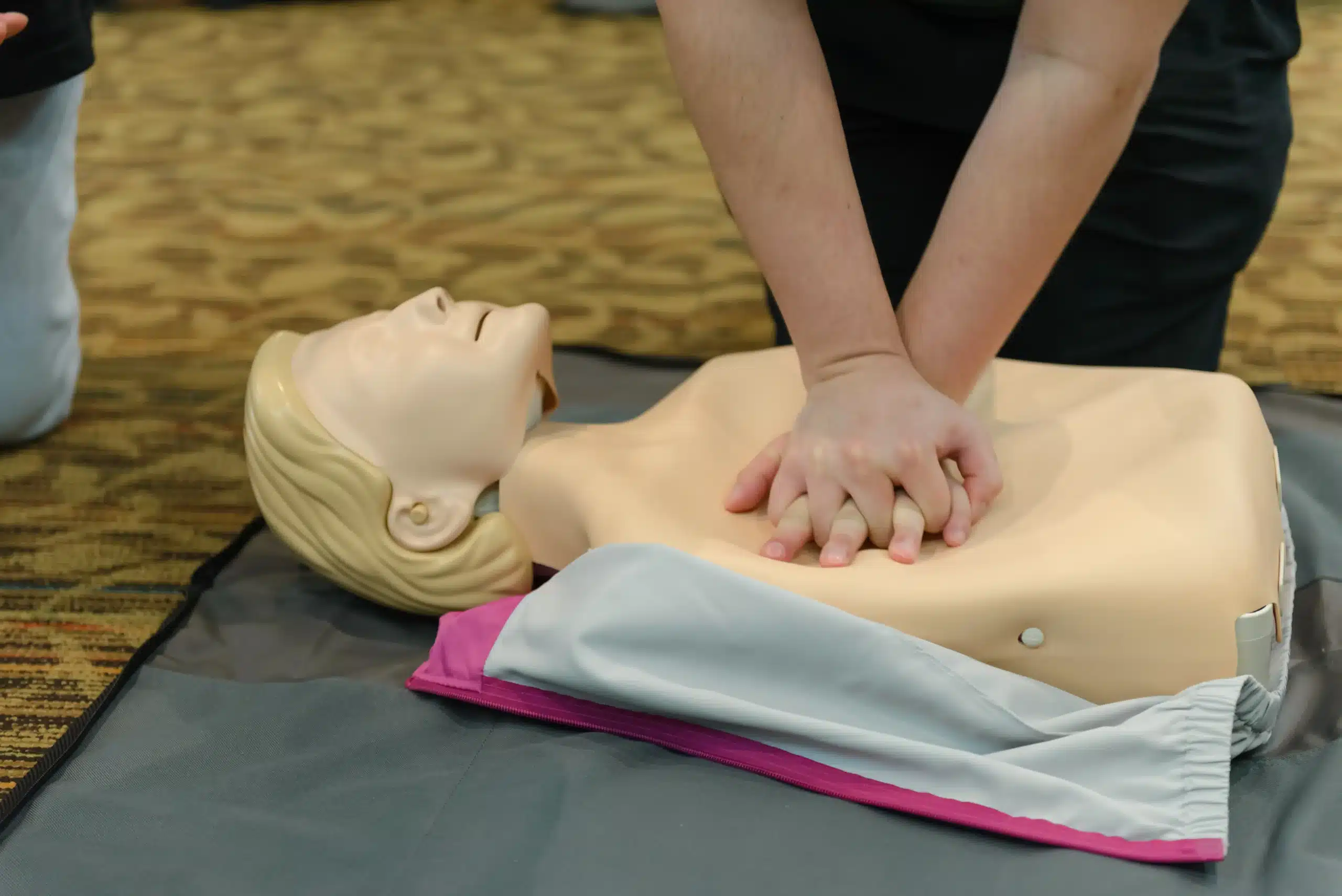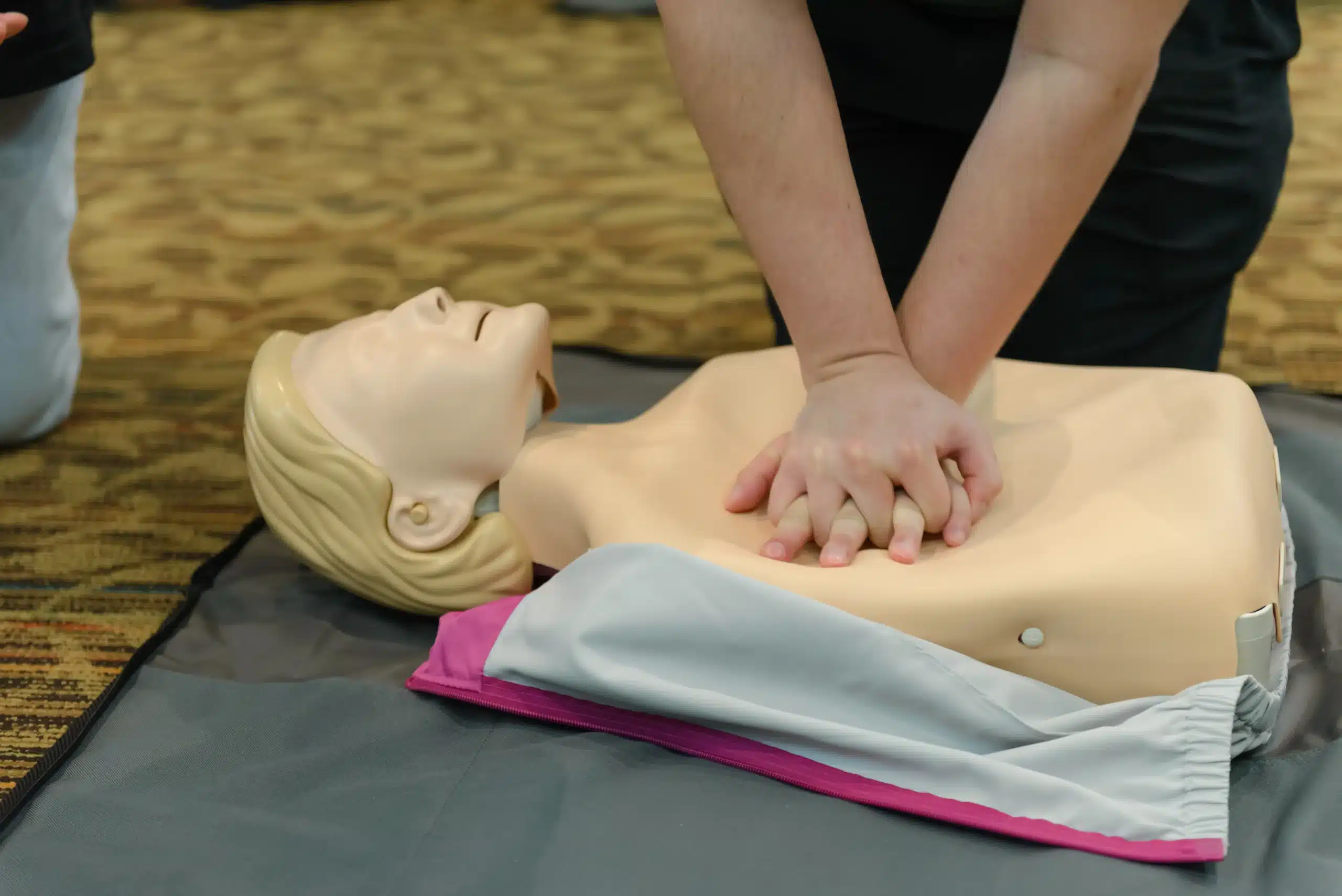Life in San Francisco is fast-paced, and carving out time for essential training can be tough. But what if you could learn lifesaving skills like CPR from the comfort of your home, at your own pace? Online CPR classes in SF make this possible. This guide is your one-stop resource for everything related to online CPR training in San Francisco. We’ll cover the advantages of online learning, explain the hybrid approach (online learning plus in-person skills sessions), and help you find reputable providers. We’ll also discuss pricing, common misconceptions, and offer tips for getting the most out of your online learning experience. Ready to gain valuable skills and confidence? Let’s dive in.
Key Takeaways
- Online CPR training offers a flexible path to lifesaving skills: The blended learning format combines online coursework with in-person skills sessions, allowing you to learn at your own pace and schedule the hands-on portion when it’s convenient.
- Choose a course that aligns with your needs: Consider factors like the type of certification required (CPR, BLS, ACLS, PALS), the provider’s reputation, and the availability of ongoing support. Reading reviews from other students can also help you make an informed decision.
- Maintain your skills through ongoing practice: CPR is a perishable skill. Look for opportunities to refresh your knowledge and practice your techniques regularly to stay prepared for real-life emergencies.
What are Online CPR Classes in San Francisco?
Online CPR classes offer a flexible way to learn the lifesaving skills of cardiopulmonary resuscitation. These courses typically involve a combination of online instruction and in-person skills practice and testing. This blended learning approach allows you to study the cognitive components of CPR at your own pace, then demonstrate your skills to a certified instructor. Many organizations in San Francisco provide this hybrid format, making CPR certification more accessible than ever. Let’s break down the benefits, the structure, and some common misconceptions surrounding online CPR training.
Benefits of Online CPR Training
Online CPR training offers flexibility and convenience that traditional, classroom-based courses often can’t match. You can study the material whenever and wherever it suits you, fitting the training around your existing schedule. This is particularly helpful for busy professionals, parents, or anyone with a packed calendar. Online courses are also more accessible, eliminating the need to commute. This can be a significant advantage for those living in areas with limited course availability or those who prefer learning from home.
Hybrid Learning: Online and In-Person
While the online portion covers essential CPR knowledge, the in-person component is crucial for mastering practical skills. This hands-on portion usually involves demonstrating CPR techniques on a manikin under the guidance of a certified instructor. The instructor provides feedback and ensures you’re performing compressions and breaths correctly. This blended approach combines the convenience of online learning with the necessary hands-on experience, ensuring you’re fully prepared to respond in a real-life emergency. For example, many training centers in San Francisco offer ACLS renewal courses using this hybrid model.
Common Misconceptions
One common misconception is that online CPR training is entirely online. It’s important to understand that certification always requires an in-person skills assessment. Another myth is that online learning is less effective than traditional classroom learning. In reality, the online portion allows for focused, self-paced study, which can be highly effective. Some people also worry about performing CPR incorrectly or causing harm. These are valid concerns, but the in-person skills session addresses them directly, providing the guidance and feedback needed to build confidence. By understanding the true nature of hybrid online CPR classes, you can make an informed decision about the best training path.
Top Online CPR Class Providers in SF
Finding the right CPR certification course can feel overwhelming with so many options. To simplify your search, I’ve compiled a brief overview of reputable online CPR class providers in San Francisco. This list includes national organizations and local providers, each with unique advantages.
Safety Training Seminars
Safety Training Seminars offers a convenient path to ACLS certification online, often providing same-day certification after you pass the skills test. They also offer other American Heart Association certifications, including BLS, PALS, and First Aid. Their commitment to customer service and a low price guarantee make them a strong contender. Serving San Francisco, Daly City, San Mateo, and Oakland, they cover a wide area across Northern California.
American Red Cross
The American Red Cross, a trusted name in emergency preparedness, offers various CPR and First Aid classes in San Francisco. With their established reputation and experienced instructors, they deliver comprehensive training to build your skills and confidence in responding to emergencies.
Revive CPR
Revive CPR specializes in American Heart Association (AHA) certified courses, including CPR, BLS, and First Aid. Their instructor-led training emphasizes hands-on learning, avoiding voice-assisted manikins for a more personalized and interactive experience.
CPR Education
CPR Education provides flexible options for CPR and first aid certification, with both in-person and blended learning formats. Serving the greater San Francisco Bay Area, they offer accessible training for individuals and groups.
American Heart Association
While the American Heart Association doesn’t directly teach classes, they establish the standards for CPR training. Providers like Bay Area CPR offer a range of AHA-certified courses, including BLS, ACLS, PALS, and Wilderness First Aid, ensuring you receive training aligned with national guidelines.
Explore Online CPR Course Features
Online CPR classes offer a range of features designed to fit different learning styles and schedules. Understanding these features will help you choose the right course.
Course Duration and Structure
One of the biggest advantages of online CPR training is flexibility. Many accredited programs, like those offered by Safety Training Seminars, allow you to learn at your own pace and complete the required hands-on skills test, often with same-day certification. This blended learning approach combines online convenience with the essential practical experience of in-person skills sessions. Work through the online modules whenever it suits you, then schedule a short in-person session to demonstrate your skills and receive your certification.
Certification Types
Different online CPR courses lead to different types of certifications. Make sure the course aligns with your professional requirements. Healthcare providers often need BLS, ACLS, or PALS certification, while other professions might require basic CPR and First Aid certification. Bay Area CPR offers American Heart Association-certified courses, including BLS, ACLS, and PALS. Review the specifics of each course to ensure it meets your needs. If you need help deciding which certification is right for you, reach out to one of our CPR advisors.
Hands-On Practice
While the knowledge portion of many CPR courses is delivered online, hands-on practice remains crucial. Online CPR certification courses offer theoretical knowledge through videos, diagrams, and interactive quizzes, but they also require an in-person skills evaluation. This typically involves performing CPR on a manikin under the guidance of a certified instructor. This blended learning approach ensures you can confidently apply your knowledge in a real-life emergency.
Accessing Learning Materials
Online CPR courses often provide access to digital learning materials for a set period. Some programs, like the American Heart Association’s Heartsaver courses, give students access to online materials for 24 months after course activation. This allows you to review the material and reinforce your learning.
Instructor-Led vs. Self-Paced
Online CPR courses can be either instructor-led or self-paced. Instructor-led courses follow a set schedule with live online sessions, offering real-time interaction with the instructor and other students. Self-paced courses allow you to complete the online modules at your own convenience. Safety Training Seminars is known for flexible scheduling and convenient locations. Consider your learning preferences and schedule when deciding between these two formats.
Compare CPR Class Prices in SF
CPR class prices in San Francisco can vary, so comparing options before signing up is a good idea. Understanding what affects pricing can help you find the best value.
Cost Range by Provider
Different CPR training providers have different pricing structures. Established providers like Safety Training Seminars offer various courses, often with competitive pricing and a low-price guarantee. Their courses are conveniently located throughout the Bay Area, including San Francisco, Daly City, San Mateo, and Oakland. Checking several providers’ websites or calling them directly is helpful to understand their course fees. Some providers, like Bay Area CPR, also offer online and blended learning options.
Pricing Factors
Several factors influence CPR class costs. The type of certification you need plays a significant role. For example, a basic CPR course is typically less expensive than an ACLS or PALS course because of the advanced material. Your chosen learning format—in-person or online/blended—can also affect the price. Many training centers offer hybrid courses that combine online learning with in-person skills sessions, as discussed in this article on online ACLS classes in San Francisco.
Discounts and Promotions
Look for discounts and promotions that can make your CPR training more affordable. Some providers, like Revive CPR, offer discounts for groups. Asking about current specials when you contact a training center is always wise.
Group Rates and Packages
If you’re training a group, ask about group rates and packages. These can often significantly lower the per-person cost. Revive CPR offers group discounts and flexible scheduling. Bundling multiple certifications or combining training for several employees can also save money.
Find Quality Online CPR Training
Finding a high-quality online CPR class involves a little research upfront. It’s worth the effort to ensure your certification meets workplace standards and equips you with the skills to respond confidently in an emergency. Here’s what to look for:
Accreditation and Certification
First, confirm the online CPR course is accredited by a recognized organization like the American Heart Association (AHA) or the Red Cross. This ensures the course content aligns with current CPR guidelines and is accepted by employers and licensing boards. Many healthcare jobs, for example, require AHA certification. Check with your employer or regulatory body to confirm specific requirements. AHA-accredited courses cover essential techniques and provide a standardized level of training.
Instructor Qualifications
Look for online CPR training programs with certified instructors who possess extensive experience. Ideally, instructors should have real-world experience in healthcare or emergency response. This practical background adds depth to their teaching and allows them to share relevant examples. Also, consider whether the program offers a blended learning approach. Many training centers in San Francisco offer hybrid courses that combine online learning with in-person skills sessions. This allows you to learn at your own pace online and then practice your skills with a qualified instructor. This hands-on component is crucial for mastering CPR techniques.
Student Reviews
Reading reviews from past students offers valuable insights into the quality of an online CPR class. Look for comments about the clarity of the online materials, the responsiveness of instructors, and the overall learning experience. Bay Area CPR, for instance, is known for its comprehensive AHA-certified courses and flexible scheduling options. Student feedback can help you gauge whether a particular program is a good fit for your learning style and meets your expectations. Honest reviews can highlight both the strengths and weaknesses of a program.
Post-Course Support
Quality online CPR training programs often provide post-course support. This might include access to refresher materials, online communities, or opportunities to connect with instructors for ongoing questions. Periodic refresher courses are also beneficial for maintaining your skills and staying up-to-date with any changes in CPR guidelines. Knowing you have access to continued support can boost your confidence in applying your learned skills. Continued learning is essential for maintaining proficiency in CPR.
Choose the Right Online CPR Class
Finding the right CPR class boils down to understanding your needs and preferences. With so many options in San Francisco, from in-person instruction to online and hybrid learning, you can find a course that fits your schedule and learning style. This section will guide you through key factors to consider when choosing an online CPR class.
Assess Your Needs
Before browsing online CPR courses, think about why you need CPR certification. Are you a healthcare worker, a childcare provider, or someone who wants to be prepared for emergencies? Understanding your needs will help you choose the right certification level, such as Basic Life Support (BLS Certification) or Advanced Cardiovascular Life Support (ACLS Certification). Healthcare professionals may need certifications like PALS (Pediatric Advanced Life Support). Our San Francisco location offers various courses to meet different needs, so you can find the perfect fit.
Scheduling Flexibility
One of the biggest advantages of online CPR training is its flexibility. Many accredited programs, like those at Safety Training Seminars, let you learn at your own pace. This self-paced learning works well for busy professionals, parents, and anyone with a full schedule. Complete the online portion whenever and wherever it’s convenient. Many programs also offer flexible in-person skills testing, often with same-day certification.
Technical Requirements
Before enrolling, ensure your computer and internet meet the course requirements. Most online courses require a reliable internet connection, a webcam, and a microphone for the skills check. Also, verify the online CPR course is accredited by a reputable organization like the American Heart Association (AHA) or the Red Cross. This ensures your certification is widely recognized.
Tips for Effective Online Learning
Online learning offers flexibility but requires self-discipline. Setting a study schedule and following it can significantly improve your results. Break the course material into smaller sections, and schedule regular study sessions. If the online CPR test makes you nervous, practice helps. Use practice quizzes and simulations offered by many online courses. Simple learning techniques can make the test much less intimidating.
Additional Resources for Confidence
After earning your CPR certification, remember continuous learning is key to maintaining your skills. Refresher courses offer valuable practice and updates on CPR techniques. These courses reinforce the basics and introduce new guidelines, ensuring you’re always prepared. Many programs, including our RQI program, provide ongoing support. Safety Training Seminars offers a low price guarantee, giving you the best value for your training.
Related Articles
- Low-Cost CPR Training in Northern California: A Guide – San Francisco CPR Classes
- CPR Renewal in SF: Your Complete Guide – San Francisco CPR Classes
- Best Online ACLS Classes in San Francisco – San Francisco CPR Classes
- CPR Training in San Francisco: A Complete Guide – San Francisco CPR Classes
- Busting CPR Myths to Save Lives
Frequently Asked Questions
Is online CPR certification fully online?
No. Online CPR certification typically involves completing the coursework online at your own pace, followed by an in-person skills evaluation with a certified instructor. You’ll practice and demonstrate your CPR techniques on a manikin to ensure you can perform them correctly.
What’s the difference between online CPR training and traditional classroom training?
Online CPR training offers more flexibility. You can study the material whenever and wherever it’s convenient for you. Traditional classroom training requires attending a scheduled class at a specific time and location. Both formats typically include a hands-on skills assessment with an instructor.
How long does online CPR certification last?
CPR certifications are typically valid for two years. It’s essential to renew your certification before it expires to maintain your skills and ensure you’re up-to-date with the latest CPR guidelines.
How do I choose the right online CPR class?
Consider your specific needs and what type of certification you require. Healthcare providers often need different certifications than those in other professions. Think about your learning style and schedule. Do you prefer self-paced learning or a more structured approach? Finally, compare prices and look for reputable providers with accredited courses.
What if I’m nervous about performing CPR in a real emergency?
It’s normal to feel nervous, but the purpose of CPR training is to prepare you for such situations. The in-person skills evaluation portion of the course allows you to practice your skills in a safe and controlled environment. This hands-on practice, combined with the knowledge you gain from the online coursework, will build your confidence and prepare you to respond effectively in an emergency.


